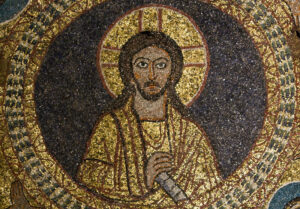After the police killings of George Floyd in Minneapolis, and Breonna Taylor in Louisville, KY, people across the country began new protests against racism and police violence. Police across the country retaliated against many peaceful protests by escalating or engaging in excessive uses of violence. The Capitol Hill district of Seattle, where protesters often marched toward the Seattle Police Department’s East Precinct, was no different.
That is until June 8, when the police boarded up and abandoned the precinct, leaving the area to protesters. Quickly people transformed the area into the Capitol Hill Autonomous Zone (or Free Capitol Hill), a six-block haven for protest and revolution. The area grew to occupy most of Cal Anderson Park; street art, tents and people filled the scene.
A “No-Cop Co-Op” offered free supplies and food, a circle of couches dubbed “Conversation Cafe” hosted discussions about racism in America, people passed out pamphlets of Marxist or abolitionist reading materials. It was renamed “Capitol Hill Occupied Protest” (CHOP) to better reflect the goals of protesters. After a shooting the weekend of June 19, Seattle’s Mayor said they would disband the zone and police would reoccupy the precinct. Around 5 a.m. on July 1, Seattle Police forced protesters out of the zone and disbanded the area.
CHOP was never meant to exist in a vacuum apart from broader struggles against racism and capitalism. It was an inspiring moment in the ongoing fight for freedom by those hoping to liberate Seattle from racial capitalism. There are important lessons that CHOP offers to anyone across the globe involved in liberation struggles.
Painted plywood sits on a concrete barrier inside Seattle’s Capitol Hill Occupied Protest on June 21, 2020. The plywood reads “BLACK LIVES MATTER TO GOD.” (Mitchell Atencio)
Rev. John Helmiere, of Valley and Mountain Church in Seattle, helped organize an interfaith chaplaincy table at the CHOP. He was inspired toward action when he saw the Marshall Law Band performing a block away from protests on Capitol Hill.
“I was like, ‘this is sort of the church, right here.’ This is a space of confronting injustice and – literally a block away – a space of celebration, joy and healing.” he said. “I wanted to bring what I have to the table, because that was the call from Andrè Taylor and Nikkita Oliver, to bring what you have to the table.”
The chaplaincy table offered prayer, blessing and conversation to anyone who desired. They gave out PPE, food and hand-sanitizer. As they worked to set up, they also got in touch with the Black leadership of the community, offering their contact list and support in any way possible. After learning of the BIPOC-lead “Healing Justice” space in the Cal Anderson section of CHOP, they folded up their chaplaincy table and turned their work to supporting that space.
Helmiere and his co-organizers, Rev. Cecilia Kingman and Rabbi David Basior, model a willingness to play a part in a greater movement. That willingness will be needed both in the work of revolution, and in the new society we hope to create. Folding up the chaplaincy table demonstrated attentiveness to the Black leadership of CHOP and a commitment to aligning their practice with the radical goals they seek. As America’s oppressive order faces an insurgent challenge for Black lives, white people, especially white Christians, must be careful to practice what they preach. If we envision an inclusive society where the oppressed actively determine the shape of their liberation, we must begin to practice liberative politics that decenter whiteness here and now.
At the home plate of Cal Anderson Park’s ballfield, protesters lifted a sculpture of the raised fist, symbolizing resistance and solidarity. (Mitchell Atencio)
In her book No Shortcuts: Organizing for Power in the New Gilded Age, union organizer Jane McAlevy applauds organizers who lean on the community church for support. She says churches can utilize their spaces, and people to create a support system for efforts that give power to organizing workers. They can also use their scripture and tradition to point congregants in the direction of organizing for justice. Helmiere agreed that the church needs to answer the call of organizers.
“There is a need for clergy to be more attentive to the calls that have already been issued to get organized with leadership that comes from marginalized populations,” he said. “The church is meant to be an organized, value-based, liberation-oriented community. We should be well-versed, trained and able to jump into action.”
We should also learn from the focus on demands that are displayed by those involved in CHOP. Helmiere, along with the other clergy contacted for this piece, emphasized that the focus should remain on Black Lives Matter and the Black leadership driving the protest. Some even declined interviews to give other organizers a chance to speak, or to reinforce where they felt the focus should be.
The demands of CHOP are focused on the abolition of police and prisons, redress for oppression toward Black and Indigenous people and people of color, accountability for public leaders and a recalibration of Seattle’s budget. Depending on who you ask, there is some variation in how to meet these demands. The decentralized, leaderless style of CHOP may be seen by some as a flaw, but it is intentional. Nikkita Oliver, a leading activist in Seattle, has consistently highlighted why movements like CHOP can emerge without figureheads:
“[I]f you look at what has happened in similar movements, we’ve ended up with figureheads—and when the figurehead is gone, the movement dies,” Oliver told Vanity Fair. “The beauty of what’s happening now is that it’s becoming diffuse and harder to tell who the figurehead is because there are so many leaders all over the city doing their own thing but aligning to the common values and goals, which is incredibly powerful.”
A sign displayed at the “No-Cop Co-Op,” inside CHAZ on June 11. The sign reads “Breath safely my beloved community” and sat above free face masks offered by the co-op. (Mitchell Atencio)
For all the criticism of CHOP’s decentralized politics, it has already seen some results. Seattle agreed to give over the deed of a decommissioned fire station, which the organization King County Equity Now has been demanding since before protests began. Seattle City Council banned the use of chokeholds, pepper spray and tear gas. While these achievements are small compared to demands that Seattle defund the police or grant amnesty for all protesters, they are proof of the power of protests to incite action and change.
While some saw the shooting last weekend as proof that CHOP was dangerous, organizers were quick to point out that police have failed to stop other violence in the same area, saying “we keep us safe”
Protests against racist and capitalist oppression offer tangible freedom that one can experience and feel in their body. Even when oppressors are unaware of their harmful actions, the oppressed know its reality by living it. At CHOP, the “Healing Justice” space sought to bring health and wellness as a form of protest.
Hanna, a massage therapist and body worker (who uses they/them pronouns and asked that their last name not be used), worked in the healing justice center on Sunday afternoon, June 20. They said the participants of the center organized themselves via a text thread and sign up sheet, making sure the center was always staffed by two members. The group is a blend of massage therapists, acupuncturists, mental health professionals, and clergy people.
A sign draped over a barricade reads “Welcome to CHOP please enjoy your stay” on June 21. (Mitchell Atencio)
“Systemic oppression affects our nervous systems. It gets down into our physicality and creates chronic stress and chronic pain. In order to really have justice in the world, we need to be healthy and be empowered in our own bodies.” they said. “Capitalism only works by disconnecting us from our own bodies. I want to help people find their own bodies again.”
CHOP has made clear that it will not just be a footnote in the history of revolutions. Organizers and individuals have used it as an accelerant for the work already being done to advance Black power, abolish prisons, increase police accountability, and establish socialized healthcare. CHOP/CHAZ is another chapter in Seattle’s rich history of occupied protests, a history replete with success. Those of us who are adjacent to CHOP would be smart to learn and apply the lessons it teaches.
** Correction: An earlier version of this article incorrectly stated that a shooting in CHAZ. The shooting took place on June 20, not July 19.
Mitchell Atencio is a barefoot journalist and photographer currently based in Seattle. He self-describes as a political and theological universalist.




